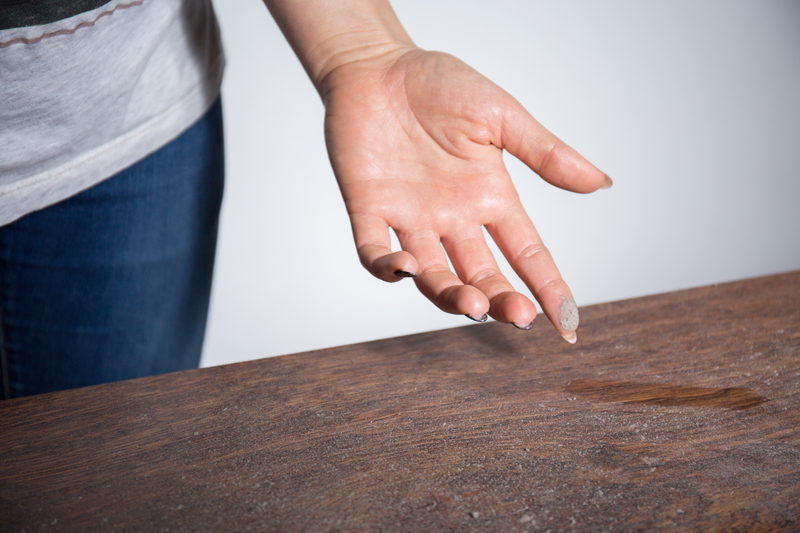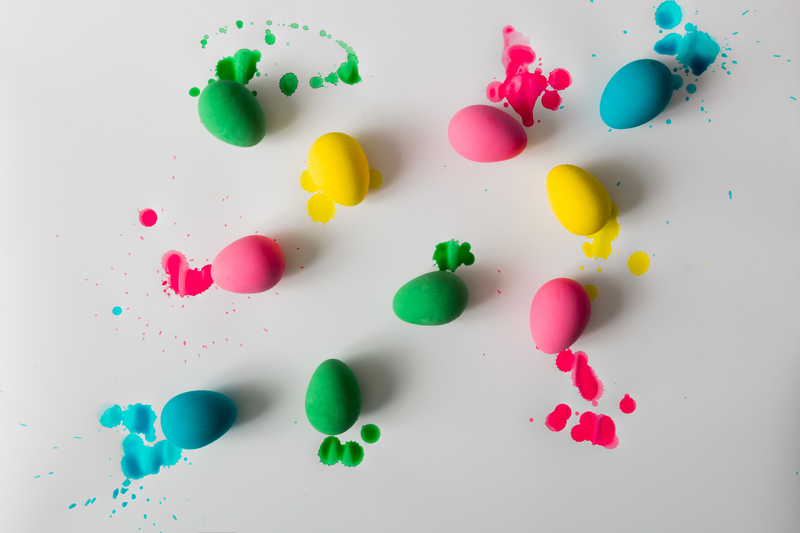Jewellery Cleaning Methods Demystified for Enthusiasts
Posted on 19/06/2025
Jewellery Cleaning Methods Demystified for Enthusiasts
Are you passionate about jewellery care and preservation? Do you want your precious jewellery pieces to shine brilliantly and maintain their luster for years to come? In this comprehensive guide, we will demystify the most effective jewellery cleaning methods--from simple at-home solutions to professional-grade techniques. Whether you cherish heirloom rings, elegant necklaces, or delicate earrings, you'll uncover the secrets to safe and sparkling clean jewellery. Let's delve into the world of jewellery cleaning and reveal tips every enthusiast should know!

Why Jewellery Cleaning Is Essential
Many jewellery lovers underestimate the importance of routine cleaning for their favorite adornments. Over time, dirt, oils, lotions, and environmental contaminants can accumulate on the surface and in the crevices of even the highest quality pieces. This accumulation can:
- Dull brilliance and sparkle
- Promote tarnishing and corrosion
- Increase risk of skin irritation or allergies
- Mask structural issues and damage
- Reduce overall value and appearance
Thus, regular jewellery maintenance goes beyond vanity--it helps preserve both the beauty and integrity of your beloved items.
Understanding Jewellery Materials
Before applying any cleaning method, it's crucial to understand the materials your jewellery is made from. Different gemstones and metals may react uniquely to certain chemicals or abrasion. Here is a quick overview of common materials:
- Gold: Resilient to tarnish but susceptible to scratching.
- Silver: Prone to oxidization and tarnish, especially when exposed to air, moisture, or chemicals.
- Platinum: Hard and durable, but can lose shine with grime build-up.
- Diamonds: Robust, but skin oils and residues can cloud brilliance.
- Soft gemstones (opal, pearls, turquoise): Extremely sensitive to heat, moisture, and harsh chemicals.
- Costume Jewellery: Usually plated and can flake if over-cleaned. Always test a small area first.
Tip: Always identify your jewellery's composition before choosing a cleaning process.
Top Jewellery Cleaning Methods Explained
1. Gentle Soap and Water Cleaning
For most fine jewellery, mild soap and warm water provide a safe, effective cleaning solution. Follow these steps:
- Fill a bowl with lukewarm water (never hot!) and add a few drops of mild, ammonia-free dish soap.
- Soak jewellery for 15-30 minutes to loosen grime.
- Use a soft-bristled toothbrush to gently scrub crevices and settings.
- Rinse thoroughly with clean, lukewarm water.
- Pat dry with a lint-free cloth.
Best for: Gold, platinum, diamonds, sapphires, and rubies.
2. Baking Soda Paste for Deep Cleaning
For stubborn tarnish on silver jewellery, a simple homemade paste can work wonders:
- Mix three parts baking soda with one part water to make a paste.
- Apply paste to the silver with a soft cloth or sponge.
- Gently rub, focusing on tarnished areas.
- Rinse thoroughly and polish with a clean, dry cloth.
Note: Do not use baking soda on soft stones or plated jewellery, as it can be abrasive.
3. Ammonia Solution for Extra Sparkle
If your diamonds or hard gemstones lack sparkle, a diluted ammonia solution can restore their brilliance:
- Mix 1 part ammonia with 6 parts water.
- Soak the jewellery for no more than 1 minute.
- Use a soft brush to clean any remaining grime.
- Rinse with water and dry immediately.
Warning: Never use ammonia on pearls, opals, or porous stones!
4. Ultrasonic Jewellery Cleaners
An ultrasonic jewellery cleaner uses sound waves to dislodge dirt and grime from intricate jewellery. Many enthusiasts prefer these machines for at-home deep cleaning--but with caution.
How it works:- Jewellery is placed in the cleaner's basket, covered with water and cleaning solution.
- The device generates ultrasonic vibrations, creating cleaning bubbles that penetrate tiny crevices.
- After a set time (2-10 minutes), items are rinsed and dried.
Important! Ultrasonic cleaners should NOT be used on pearls, emeralds, opals, or vintage/fragile pieces, as vibrations may damage them or loosen settings.
5. Commercial Jewellery Cleaners
Commercially formulated jewellery cleaning solutions are convenient and effective for daily maintenance. These solutions come in liquids, wipes, and gels suited for specific jewellery types.
- Carefully read the manufacturer's guidelines.
- Ensure compatibility with your jewellery's metal and stones.
- Never use silver dips on gemstones or pearls--they may cause irreversible harm!
6. Professional Cleaning and Polishing
For intricate, antique, or highly valuable jewellery, entrust professional jewellers with cleaning and periodic check-ups. Experts have access to industry-grade cleaners, steamers, and polishing equipment, guaranteeing thorough and safe cleaning. Moreover, they can inspect for:
- Loose settings or clasps
- Worn prongs
- Potential cracks or chips
Benefit: Professional cleaning ensures your treasures are both sparkling and secure.
Special Care for Delicate and Unique Jewellery Types
Pearls
Pearls are organic, highly sensitive to chemicals, and absorbent. To clean them:
- Gently wipe after wearing with a soft, damp, lint-free cloth.
- For deeper cleaning, use a mixture of water and a drop of mild soap on a damp cloth. Wipe gently and never soak.
- Dry flat on a towel; avoid hanging stranded pearls while still wet.
Opals, Turquoise, and Other Porous Stones
- Clean with a soft, barely damp cloth only.
- Avoid exposure to detergents, ammonia, acids, and even prolonged water contact.
- Always store these stones separately to prevent scratching.
Costume and Plated Jewellery
- Use a soft cloth and water only. Avoid soaking or using any abrasive materials.
- For stubborn spots, dab a cotton swab in soapy water and gently wipe affected areas.
- Completely dry and store in an airtight bag to minimize tarnishing.
Tips to Prevent Jewellery Tarnish and Damage
Cleaning jewellery removes dirt, but prevention is equally important for maintaining their appearance. Here's how enthusiasts can keep their treasures pristine:
- Wear jewellery last: Apply makeup, lotions, hairsprays, and perfumes before putting on your jewellery.
- Remove before tasks: Take off rings and bracelets when washing hands, using cleaning products, or exercising.
- Proper storage: Store pieces in a dry, cool, and dark place using anti-tarnish pouches or lined boxes.
- Routine checks: Check clasps and settings regularly, especially on frequently worn items.
- Avoid harsh environments: Keep jewellery away from chlorinated pools, hot tubs, or saltwater.
Common Jewellery Cleaning Mistakes to Avoid
Even seasoned jewellery enthusiasts can make cleaning errors that damage their pieces. Here's what not to do:
- Using harsh chemicals: Bleach, acetone, and window cleaners can harm metals and dissolve adhesives.
- Excessive brushing: Hard-bristled brushes can scratch settings and stones.
- Ultrasonic misuse: Ignoring warnings about vulnerable stones can lead to breakage or detachment.
- Neglecting drying: Moisture left in crevices invites tarnish and even mold growth, especially in vintage or hollow pieces.
Jewellery Cleaning Frequency: How Often Is Enough?
How frequently should you clean your jewellery? The answer depends on how often you wear each piece:
- Everyday wear (rings, studs): Clean once a week and polish monthly.
- Occasional pieces: Clean and inspect before storing for prolonged periods and after each use.
- Heirlooms or vintage: Minimal cleaning--stick to gentle methods and consult a professional for deep cleaning.
DIY Jewellery Cleaning Methods vs. Professional Cleaning
At-home cleaning methods are effective for regular maintenance, but it's wise to periodically seek professional expertise, especially for:
- Expensive, antique, or sentimental items
- Pieces with intricate settings or multiple types of stones
- Visible damage or persistent grime
Combining both approaches maximizes your jewellery's longevity and sparkle.
The Best Storage Practices After Cleaning
Once your jewellery is spotless, proper storage is essential:
- Store in a cool and dry place
- Use individual pouches, soft compartments, or boxes to avoid scratches and tangling
- For silver, anti-tarnish strips and silica gel packets can prolong shine
- Keep pearls and soft stones in breathable fabric pouches--never in plastic bags

Eco-Friendly Jewellery Cleaning Methods
Environmentally conscious enthusiasts often prefer natural cleaning solutions. Some eco-friendly options include:
- A drop of eco-friendly mild soap mixed with warm water
- Baking soda and water paste for silver (avoid stones)
- White vinegar diluted with water for tarnish (never use on stones!)
Bonus tip: Use bamboo or recycled-fiber cloths for eco-smart jewellery drying and polishing.
Conclusion: The Art and Science of Jewellery Cleaning
Jewellery cleaning methods are not one-size-fits-all; they require a blend of artistry, knowledge, and care. By understanding your jewellery's composition and choosing cleaning techniques that suit each material, you ensure both safety and sparkle.
Remember--the best jewellery cleaning method is one that is gentle, effective, and tailored. Equip yourself with these demystified techniques, avoid common pitfalls, and your prized pieces will reward you with enduring beauty and brilliance for generations to come.
Shine on, enthusiasts--and may your jewellery always dazzle!




